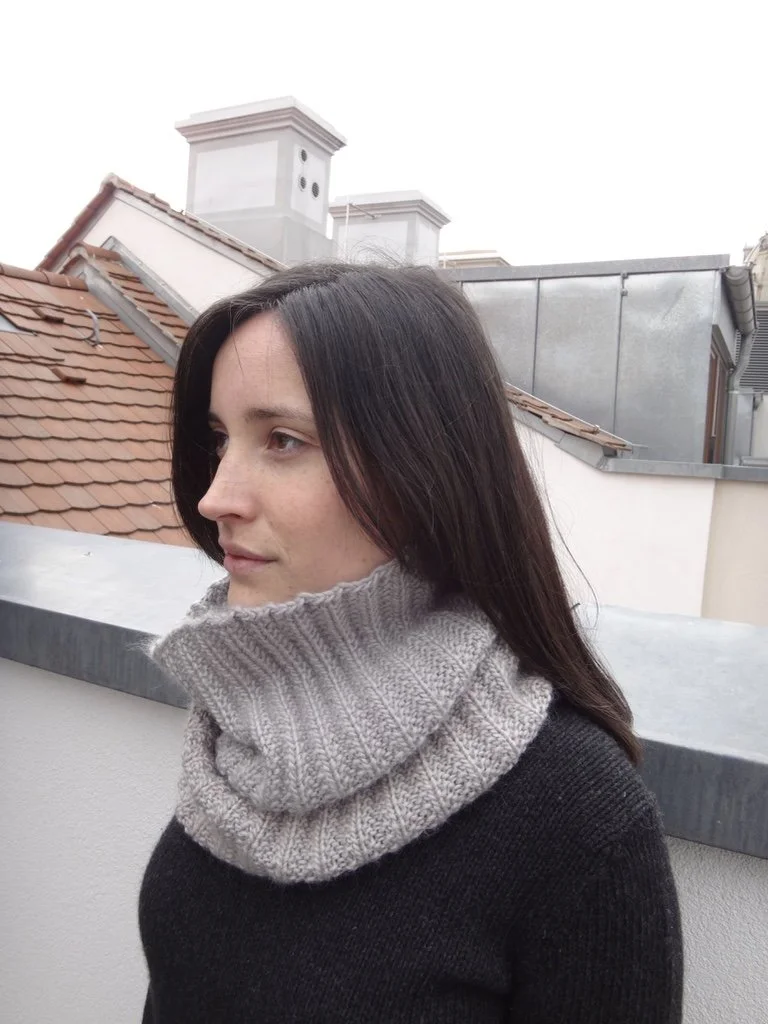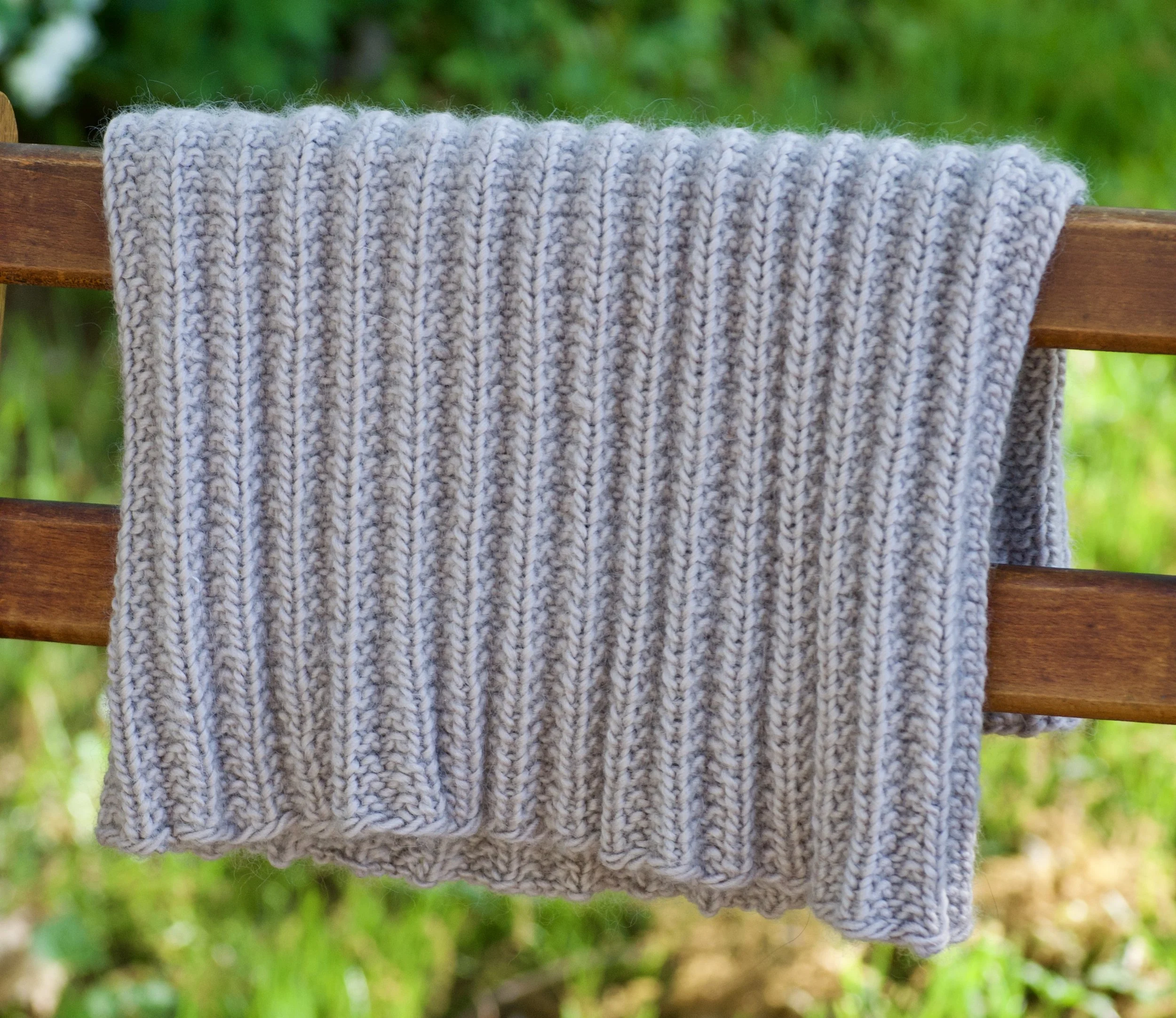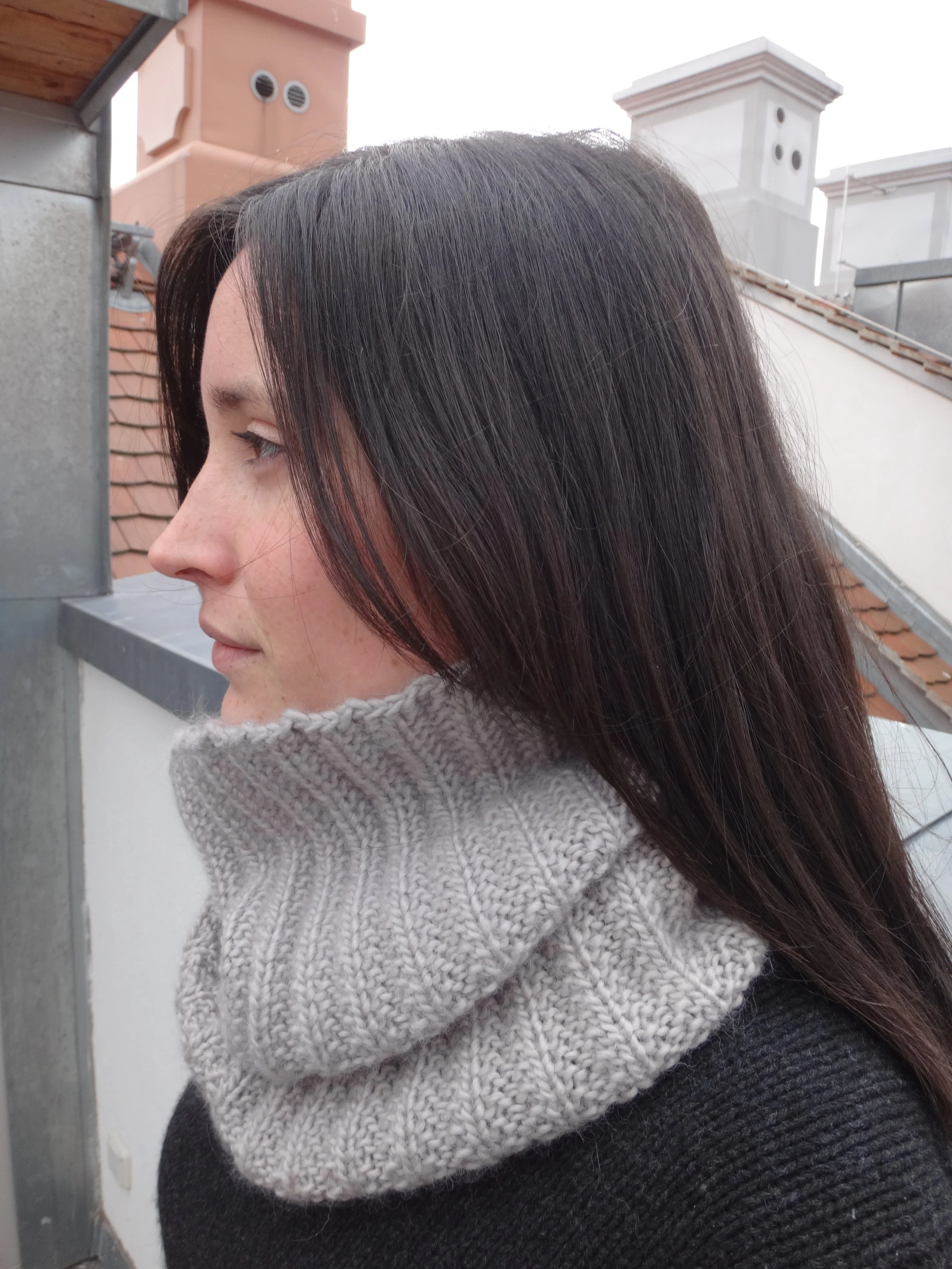PATTERN SPOTLIGHT: STRATUS COWL
As part of my retrospective celebration I want to spend some time talking about how my patterns and designs work, and how they may differ from other patterns out there. It’s one of the trickiest things about searching for patterns, that simply looking at the finished product tells you next to nothing about what goes into making it. So, I thought it might be helpful to talk through the Stratus Cowl pattern as an introduction to my design process and my principles of pattern-writing.
This is an old pattern by now and I like to think that my graphic design and photography skills have improved over time, but when reading it through I was heartened to see that in terms of actual content, this pattern is still very much in line with how I like to present a pattern to the knitter. It’s also an illustration of how something simple-looking can be much more than meets the eye, and can belie the process that went into making it. I would describe my design process as thoughtful and exhaustive; I want to think through every aspect of a project for you, in order to give you the best instructions possible, that will in turn lead to the best result possible. I would like it to be straightforward for those who just want to dive in and knit, yet I also want to provide enough information for the questioners out there who do better when they understand a concept thoroughly. And obviously the techniques and explanations needed vary enormously from pattern to pattern, but this is my basic approach. No pattern can contain absolutely everything you need; we have to assume quite a bit of basic knitting knowledge, but this is where teaching and writing can serve as a helpful supplement for those who need or want more depth.
But just because I put a lot of care into my designs, doesn’t mean that I expect you to follow everything exactly. Knitting looks different in every yarn and in every pair of hands, so if a technique doesn’t give you a result you like the look of, feel free to try something else. That is precisely how I learned to make design decisions and it’s one of the most satisfying parts of being a knitter. As much care as I take with my patterns, I have an equal desire to see you set out on your own and have the control that you wish over your project. There are many different ways to find satisfaction from knitting, so how you make use of the pattern is entirely up to you.
I’m also always looking for ways to deepen your understanding of your materials.
A simple pattern like this can be a springboard for your own exploration of yarn choice and fabric properties, which are two of the most important principles behind knitting successful pieces. Whatever your skill level in terms of actual knitting, matching the right yarn with a project gives you a much higher likelihood of enjoying both the process and the results. I like to give you the best possible start by carefully choosing the fibers I use, but I also like to explain wherever possible why I chose them and what effect it has on the project.
Now you know some of the principles I have for my approach to design. Wending our way back to the original question; what was the design process for this cowl in particular?
First, I thought about what the properties of a successful cowl would be. A cowl should slip over your head with ease, stand up a bit on its own, and never constrict. I wanted something that would feel luxurious but still check all of these boxes. Once I found the yarn I wanted to use, it was a matter of getting it to behave as I would like, balancing its innate properties with what I wanted it to become. This pattern is really just a cast-on, a stitch pattern, a bind off and (optional) blocking. But would you believe I tested all of those things in multiple ways to get them just how I liked? I played around with exactly how to work the stitch––a texture like this is highly yarn-dependent, and there are actually a few variations as to how to work the stitch pattern that can affect its appearance depending on the yarn, so I ended up using the method that gave the fluffiest and most high-relief result.
And in order to preserve that texture in this particular yarn I recommended something highly unusual for me ––not blocking the final cowl. The yarn I used is Blue Sky Fibers Suri Merino, an absolutely mouth-watering blend of fibers in a luscious single strand. But Suri (alpaca) is a heavy fiber with a propensity to hang and flatten out, and the single structure only adds to that inclination. I made another cowl in a 2x2 Rib using this same yarn and I liked how much the texture relaxed after wet-blocking; but swatching in this stitch pattern told me that I wouldn’t find the Stratus texture nearly as appealing once it had been washed. So, this cowl gets aired instead of washed and since it’s just an accessory it doesn’t demand the washing that a garment would, and it doesn’t seem to have suffered much over the last 8 or so years in spite of all the wear I give it. This is an occasion when natural fibers truly shine because one of their many quasi-magical properties is a tendency to shun dirt or at least keep it on its surface, unlike many man-made fibers which act like an electro-magnetic vortex that sucks filth into itself (sorry, I got a bit carried away there). But it’s a vital fact about natural fibers and one of the reasons they have served human beings for so long, when so much of our history involved a paltry amount of washing. But I digress... The bottom line is that sending you out to knit this cowl without explaining any of this doesn’t, in my opinion, set you up to succeed. So, although this is a relatively short pattern, it contains a note on the behavior of both the yarn and stitch pattern, and gives both unblocked and blocked gauges so that you have all the information you need to make a choice. Especially in a pattern like this when almost no one is going to make a swatch before starting, I wanted to give you the best chance of success.
This extends to the bind-off as well, as I tested many before choosing the one I did, so I hope I spared you that dreadful moment at the end of a project when you just want to get if off your needles and every cast-on you try is rubbish.
So, as you can see, I tried to anticipate all of your needs:-) It doesn’t mean I always succeed, but it is always foremost in my mind. I can knit anything I want for myself, but if it’s going to be a published pattern for others to work from, I have certain standards of care I put into practice. I like my pieces to look polished and I think many times people assume that they must be hard to make, but I will never ask you to do anything truly nasty with your knitting unless it’s really worth it, and even then I almost always give you a choice of a simpler technique. For me, the pleasure of the process is as important as the product, so that needs to be kept in view at all times.
So to sum it all up, I would say that my foundational principle for design is to make something useful, and my foundational principle for pattern-writing is to be kind.
I hope you found this explanation helpful. In future posts I’ll be sharing an in-depth look at the actual pattern content I provide, as well as doing some more design spotlights for garments.


